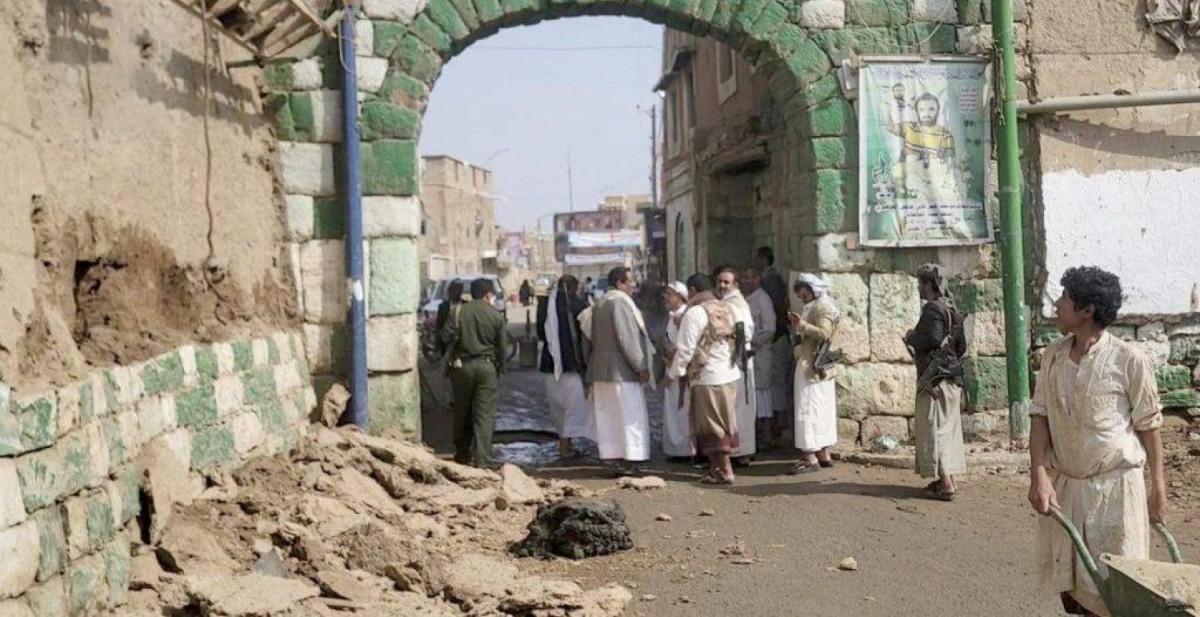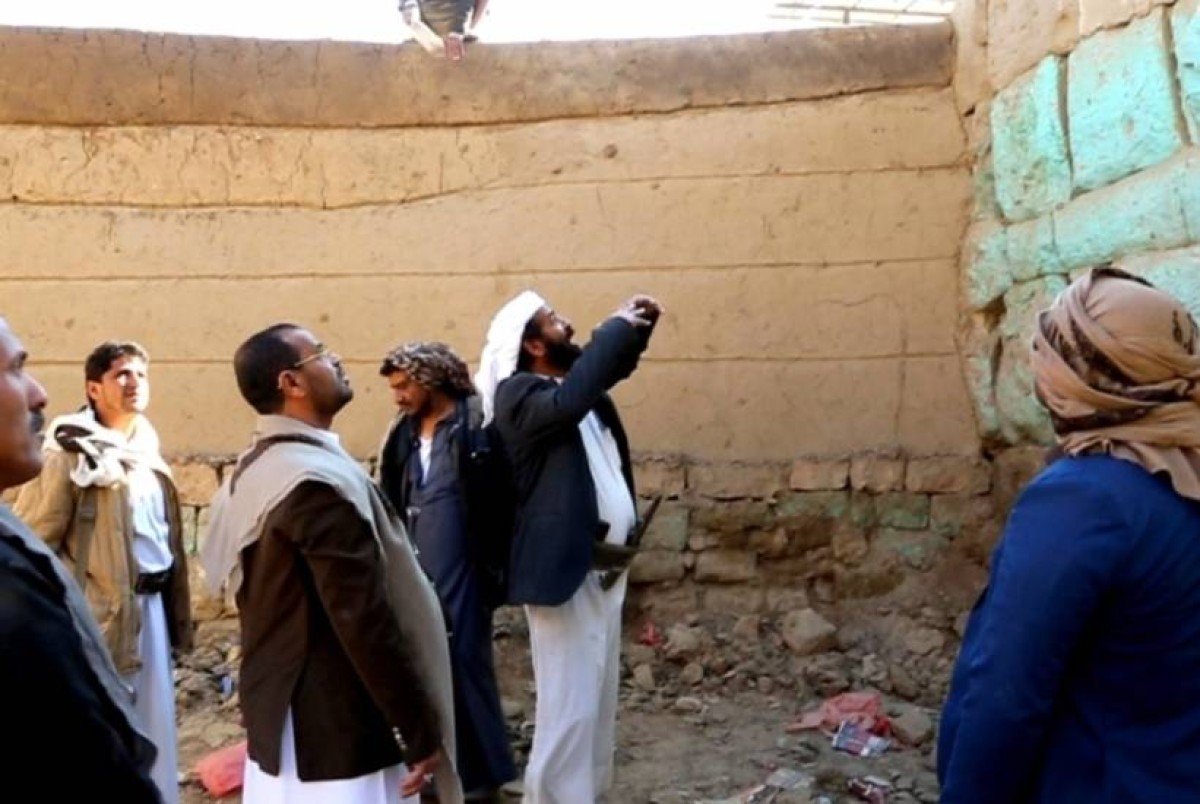Newspaper: The Houthis distort the landmarks and walls of the old city of Saada


With Yemeni historic buildings and cities exposed to severe damage due to torrential rains and the Houthi group’s deliberate disregard for the scale of the disaster, the group proceeded to deface the landmarks and walls of the historic city of Saada (north) by painting them green and smearing them with its sectarian slogans.
The group targeted by distorting the landmarks of the historical city of Saada, especially its old gates, including Bab al-Yaman, which is the main gate of the old city, Bab Najran, Bab Hamadan, and Bab al-Salam.
Local sources explained that the mutilation works supervised by the coup leaders - led by Muhammad Jaber Al-Razhi, appointed by the group to the position of Governor of Saada, and Muhammad Al-Razami, appointed to the position of First Undersecretary of the Governorate - included the removal of ancient historical monuments and writings, and replacing them with slogans containing phrases of the founder. The group and its current leader, Abdul-Malik al-Houthi, and the “Khomeini cry.”
The distortion of one of the most important historical cities in Yemen came based on the outcomes of a meeting held in the group’s stronghold, which included prominent coup leaders, and included a discussion of what the group called the implementation of rehabilitation and aesthetic projects for the city, coinciding with the group’s revival of what it calls the occasion of “the Prophet’s birthday.”
Instead of the group protecting the old city of Saada from the dangers of the torrential rains that swept several areas in recent days, the sources talked about the meeting coming up with a mechanism that stipulates making changes to the city’s landmarks, in connection with the group’s ideology and its coup project.
Activists and workers in the field of Yemeni heritage warned of the group’s efforts to bulldoze the remaining landmarks and symbolism of the ancient city of Saada, and replace them with others imported from Iranian seminaries.
In his interview with Asharq Al-Awsat, Ibrahim - a pseudonym for a worker in the field of antiquities - criticizes the Houthi ignorance of the severe damage that most archaeological sites, monuments and cities - including the ancient city of Saada - are suffering from as a result of the continuing torrential rains.
The green paint and the slogan “The Khomeini Scream” spread on the walls and buildings of the old city of Saada sparked a widespread wave of anger among residents in the old city, and they saw this as falling within the framework of Houthi defacement acts targeting all archaeological monuments and ancient Yemeni heritage.
Demands for protection
A number of residents in the ancient city of Saada reported to Asharq Al-Awsat that many homes and archaeological buildings were demolished due to torrential rains, amid Houthi neglect, including homes located in the center of the city, in addition to the collapse of parts of the historic “Bab Najran” located to the north. City.
While the so-called “Historic Cities Preservation Authority,” which is controlled by the Houthi group, issued urgent warnings stating that it had received reports that historical buildings were at risk of collapsing in Old Sanaa and other areas, heritage workers held the Houthi group responsible for tampering with antiquities and historical cities.
Those working in the field of heritage called on the United Nations Educational, Cultural and Scientific Organization (UNESCO) to take action to stop the Houthis’ distortion of the landmarks of the historical city of Saada, and to protect the rest of the archaeological monuments in Yemen from damage resulting from the continued rainfall.
The leaders of the Houthi group had previously made developments and buildings along the old wall of Saada, which is 4,000 meters long, which is the historical landmark surrounding the old city.
Local and international reports accuse the Houthi group of targeting 150,000 archaeological and historical monuments and sites, destroying, looting, bombing, and converting them into military barracks, since its coup until mid-2019.
